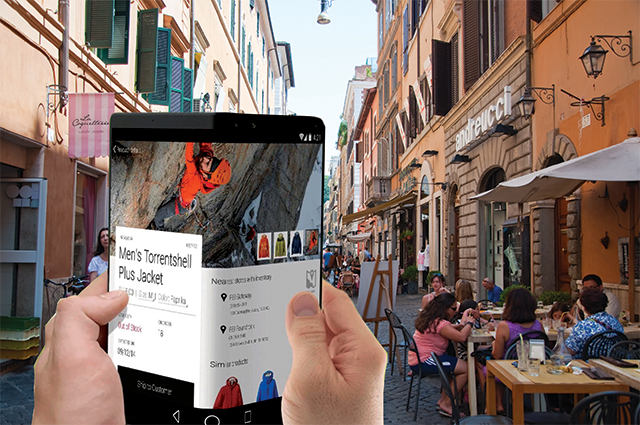折疊屏會成為引領未來的新技術嗎?
Many have longed for lightweight, durable, and flexible touch screen devices, thanks to science fiction. While some seem impossible to make, the tri-folding tablets in the US sci-fi TV series Westworld look like something we could go buy sooner or later. The 2012 film Looper likewise shows cellphones that could be folded up into half their size.
科幻作品讓很多人都渴望擁有輕便、耐用且靈活的觸屏設備。雖然有些設想看起來不可能實現,但看來我們遲早能買到像科幻美劇《西部世界》里的三折疊屏平板了。而在2012年電影《環形使者》中也同樣出現了能折疊到一半大小的手機。
Now, after 11 years of promising this foldable future, South Korean electronics company Samsung has finally delivered. With other companies rushing to roll out their own flexible phones, it seems that they've kicked off a new arms race in the smartphone industry.
如今,韓國電子公司三星終于讓11年前承諾過的折疊屏未來得以實現。隨著其他公司也相繼火速推出各自的折疊屏手機,智能手機行業的新競賽已經打響。

Back in November, Samsung announced its newest model, the Galaxy Fold. Since then, Xiaomi, Huawei and other Chinese companies have announced similar plans for foldable phones. It looks like Samsung won't take the lead all by itself, however. The same month, Royole, a lesser-known electronics brand from China, announced that it had a model – the Flexpai – ready to release. And at the 2019 Mobile World Congress, which concluded on Feb 28 in Spain, Huawei took the covers off its foldable Huawei Mate X for 2019.
去年11月,三星發布了最新型號智能手機三星Galaxy Fold。隨后,小米、華為和其他中國公司宣布了相似的折疊屏手機研發計劃,因此看來三星并不會獨領市場。同月,中國一家小眾電子品牌柔宇(Royole)也宣布新款折疊屏手機Flexpai即將面市。2月28日,于西班牙舉辦的2019年世界移動通信大會上,華為揭曉了今年即將面市的華為Mate X。
But why has it taken so many years to turn the idea into reality? According to tech news website Android Authority, the necessary displays were difficult and expensive to produce. They wrote that, in 2012, nine out of every 10 OLED screens produced were defective (有缺陷的). Today, that 10 percent rate has been improved to between 50 and 90 percent.
不過,為何經過這么多年才將折疊屏理念付諸現實?據科技資訊網站Android Authority報道,這是因為折疊屏手機所必需的顯示屏制作難度高且費用昂貴。文章中寫道,在2012年,每生產的十個OLED屏幕中就有九個是次品。如今,產品合格率已經由10%提高至了50%到90%之間。
It's fun to think about how we could use this technology. We could make TVs that stick to walls like posters, or fold up easily to hide away in drawers. Instead of carrying heavy backpacks, all of our textbooks – and the whole library – could fit into our pockets. It's also nice to think that we might not have to worry about dropping our devices.
暢想下我們能怎樣使用這一折疊屏技術很是有趣。我們可以生產像海報一樣貼在墻上的電視,或能夠輕松地把它折疊起來藏到柜子里。我們不用再背沉重的背包,因為全部的書本——甚至整個圖書館——都能放到我們的口袋里。或許我們也不用再擔心會摔壞設備了,這一點想想也很棒。
The Galaxy Flex, Flexpai phones and Huawei Mate X are just the first step to that foldable future. In a keynote address, Samsung's senior vice president of mobile product marketing, Justin Denison, called the foldable screen "the foundation for the smartphone of tomorrow". "It's a blank canvas for us to do something beautiful together," he said.
三星Galaxy Flex、柔宇Flexpai和華為Mate X僅僅是我們走向折疊屏未來的第一步。三星移動產品營銷高級副總裁賈斯汀·丹尼森在一次主旨發言中表示,折疊屏幕是“未來智能手機的基礎”。“這是一塊空白的畫布,等待我們一同去創造美好。“他說。
However, if you recall the 2002 movie Minority Report, this foldable future might not be so bright. Seventeen years ago, it introduced many people to the concept of flexible screens. What was their biggest use? Inescapable advertisements on every surface that followed the characters wherever they went.
然而,如果你回想下2002年的電影《少數派報告》,恐怕會想到這種折疊屏未來或許并非那么樂觀。17年前,這部影片讓很多人接觸到折疊屏的概念。它們最大的用處是什么?那就是鋪天蓋地的廣告。無論片中角色走到哪兒都如影隨形,擺脫不掉。












